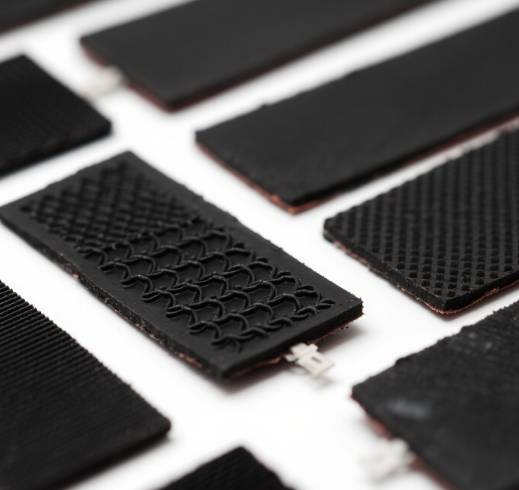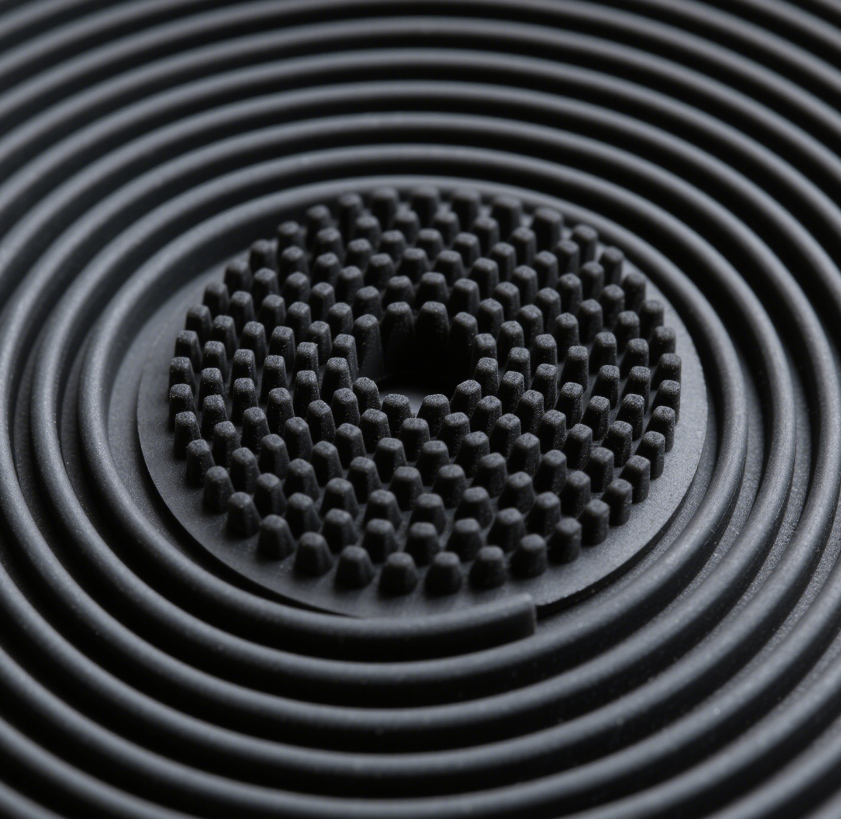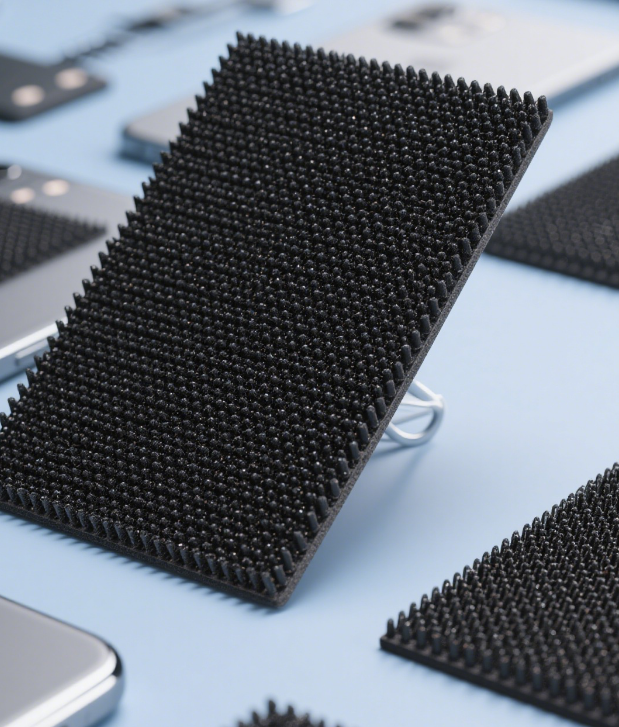conductive rubber for supercapacitors
Supercapacitor conductive rubber is a new type of composite material that combines conductive rubber and supercapacitor technology. Its core lies in combining the elastic properties of conductive rubber with the high power density and fast charge-discharge capabilities of supercapacitors, making it suitable for the energy storage needs of flexible electronics, wearable devices, and extreme environments. The following analysis is carried out from aspects such as material design, application scenarios, performance optimization, and future challenges:

- Material Design and Working Principle
- Composition of Conductive Rubber
Matrix Material: Using silicone rubber, acrylate rubber, or natural rubber as the base to provide elasticity and flexibility.
Conductive Fillers: Commonly used two-dimensional materials such as carbon black, graphene, carbon nanotubes (CNTs), and MXene are used to form a conductive network. For example, the team from the Chinese Academy of Tropical Agricultural Sciences prepared highly conductive fibers with a diameter of less than 200 micrometers and a tensile rate of up to 1200% by combining MXene/CNT composite fibers with natural rubber.
Additives: Coupling agents (to enhance interfacial bonding), vulcanizing agents (to improve mechanical stability), etc. For example, adding mesogenic anatase titanium dioxide to fluororubber can optimize the performance of the current collector. - Integration of Supercapacitors
Electrode Structure: Conductive rubber can be directly used as an electrode material, or compounded with metal oxides (such as MnO₂) and conductive polymers (such as polyaniline) to improve the specific capacitance. For example, the dual-network composite conductive rubber solves the volume expansion problem of polyaniline through the molecular-level composite of aniline-based graphene and polyaniline, and the cycle life is increased to more than 10,000 times.
Replacement of Current Collector: Traditional metal current collectors (such as aluminum foil) are prone to corrosion, while conductive rubber has both electrical conductivity and corrosion resistance, making it suitable for high-humidity or chemically corrosive environments. In the patent of Zhejiang Fengli, the conductive rubber matrix is used as the current collector, combined with a lithium titanate and carbon-based composite electrode, which increases the system energy density by 30%. - Key Performance and Optimization Strategies
- Core Performance Indicators
Specific Capacitance: The specific capacitance of pure conductive rubber is usually 50-200 F/g, and it can be increased to more than 480 F/g by compounding with high pseudocapacitance materials (such as MXene).
Cycle Life: The capacitance retention rate of the flexible conductive rubber electrode can reach 97% after 10,000 cycles, which is better than that of traditional activated carbon electrodes.
Mechanical Stability: The tensile rate can reach 1200%, and the performance is stable under deformations such as bending and twisting. - Performance Optimization Methods
Porous Structure Design: Construct MXene foam through the template method (such as the natural rubber particle template) to expand the specific surface area and accelerate ion transport.
Interface Regulation: Introduce CNTs or graphene to enhance the continuity of the conductive network. For example, the electrical conductivity of MXene/CNT composite fibers is increased to 10³ S/m.
Environmental Adaptability: Adding a corrosion inhibitor to fluororubber allows it to work stably in environments such as salt spray, acid, and alkali.
III. Typical Application Scenarios
- Flexible Electronic Devices
Wearable Energy Storage: The conductive rubber electrode is combined with a flexible substrate and used in smart bracelets, electronic skin, etc. For example, the MXene/natural rubber composite fiber developed by the Hainan Academy of Tropical Agricultural Sciences can be woven into a flexible supercapacitor.
Portable Electronic Devices: Replace traditional rigid batteries to provide high-power support, such as mobile phone fast charging modules. - Energy Storage in Extreme Environments
High/Low Temperature Scenarios: Conductive rubber has stable performance in the range of -55°C to +170°C, making it suitable for aerospace, deep-sea exploration, and other fields.
Chemically Corrosive Environments: Fluororubber-based conductive materials can resist the erosion of electrolytes and are used in the supercapacitor systems of electric vehicles. - Industrial and Energy Fields
Hybrid Electric Vehicles: Used in conjunction with lithium-ion batteries to improve the instantaneous power output. For example, the application of conductive rubber current collectors in the high-power lithium-ion batteries of Zhejiang Fengli.
Renewable Energy Storage: Used to smooth the power fluctuations of wind power and photovoltaic systems and extend the service life of equipment. - Commercialization Progress and Challenges
- Commercialization Cases
Xianghe Industrial Co., Ltd.: Developed rubber sealing plugs for supercapacitors, which are resistant to high pressure and have a long service life, and have been applied in new energy vehicles and energy storage systems.
Zhejiang Fengli: The conductive rubber current collector technology has entered the patent stage, promoting the industrialization of high-power batteries. - Existing Challenges
Energy Density Bottleneck: The energy density of conductive rubber (usually < 100 Wh/kg) is lower than that of lithium-ion batteries, and it is necessary to improve it by compounding with high-capacity materials (such as metal-organic frameworks).
Cost Control: The prices of fillers such as MXene and graphene are relatively high, and it is necessary to develop low-cost preparation processes (such as the natural rubber template method).
Large-scale Production: The uniform dispersion of conductive fillers in rubber still needs to be optimized. For example, the wet spinning technology can improve the consistency of fibers. - Future Development Directions
Material Innovation:
New Fillers: Explore two-dimensional materials such as metal-organic frameworks (MOFs) and black phosphorus to improve specific capacitance and electrical conductivity.
Bionic Design: Imitate the structure of biological muscles, develop self-healing conductive rubber, and extend the service life.
Structural Optimization:
Three-dimensional Porous Network: Construct hierarchical pore structures through 3D printing or the template method to enhance ion diffusion efficiency.
Heterojunction Engineering: Design MXene/conductive polymer heterojunctions to synergistically improve pseudocapacitance and electrical conductivity.
Interdisciplinary Integration:
Artificial Intelligence-Assisted Design: Use machine learning to optimize material formulations and shorten the R&D cycle.
Integration of All-Flexible Devices: Integrate conductive rubber electrodes with solid-state electrolytes and sensors to achieve multifunctional integration.
Conclusion
Supercapacitor conductive rubber, with its flexibility, environmental resistance, and high-power characteristics, shows great potential in fields such as flexible electronics and energy storage in extreme environments. Despite facing challenges in energy density and cost, through material innovation, structural optimization, and the integration of interdisciplinary technologies, it is expected to achieve large-scale application within the next 5-10 years, promoting the development of energy storage technology towards flexibility and intelligence.
















